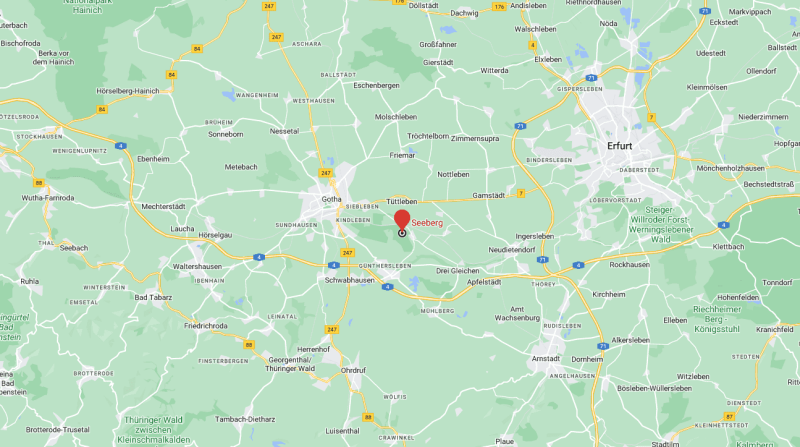
Quartz sandstone is a rock characterized on the basis of its high quartz sand content (modal over 90%) and a matrix content of clay minerals up to a maximum of 15%. This definition is based on the classification proposals of Füchtbauer and Pettijohn. Often the term "orthoquartzite" is used for quartz sandstone in English-language literature. There are also other terms such as siliceous sandstone or putty quartzite, which are occasionally used for sandstone with a siliceous grain bond [2External link].
Gotha, a city in the Thuringian Basin, hosts a quarry on the large Seeberg where quartz sandstone occurs. This quarry offers the possibility to examine and analyze quartz sandstone from Gotha [1External link].
Quartz sandstone is a part of the sandstone family, which consists of clastic sedimentary rocks. Sandstone is defined as a sedimentary rock containing at least 50% sand grains, which have a diameter between 0.063 and 2 mm. The sand grains in quartz sandstone are mainly composed of quartz, a mineral known for its hardness, durability, and resistance to weathering [4External link].
In the case of Gotha quartz sandstone, it is a matrix-poor sandstone with a high quartz sand content. This rock is often used for various construction projects because of its high strength and good weathering resistance. The sand grains are well consolidated and provide a robust structure that gives the rock its stability.
The properties of Gotha quartz sandstone make it a versatile material that can be used in a variety of applications. Due to its strength and resistance to weathering, quartz sandstone is widely used in construction, both indoors and outdoors. It is used in facade cladding, flooring, stairs, masonry and other architectural elements.
In addition, quartz sandstone is also used in landscaping to create gardens, paths and terraces. Its natural texture and variety of colors add aesthetic appeal to the surroundings. Quartz sandstone can also serve as a raw material for the production of aggregates in the construction industry.
With regard to the geological history of the quartz sandstone from Gotha, it should be noted that the deposition of this rock took place during certain geological ages. By examining the layers and sedimentary structures, it is possible to draw conclusions about the history of formation and the environmental conditions that led to the formation of the quartz sandstone.
In summary, quartz sandstone from Gotha is a rock with a high quartz sand content and a low matrix content. This rock is characterized by its strength, weather resistance and versatility. It is used in construction and landscaping and plays an important role in regional geology [2External link][4External link].
